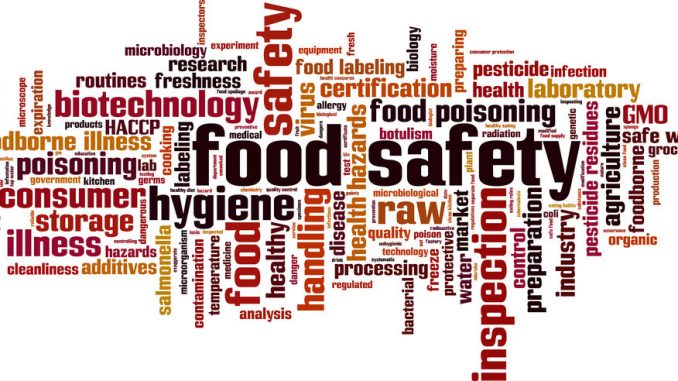
The Global Food Safety Initiative (GFSI) is a continuous improvement scheme for all manufacturers involved in the food industry. It focuses mainly on food safety management systems and seeks to harmonise and improve their performance on a global level. At this moment in time it regarded as the leading and most widely accepted certification system available
GFSI was created by some far-sighted food industry leaders known as the CIES Food Business Forum in 2000 who had a vision of ‘Safe food for consumer everywhere’. To allow this vision to occur, the leaders of the day set out to find collaborative solutions to tackle food safety risks, audit duplication and manage costs. All of these aspects would help build trust in the global supply chain by vastly improving food safety. Improvement and harmonization is accomplished through a rigorous benchmarking process where standards are compared against the GFSI requirements. If you successfully complete the benchmarking process, you are formally recognised by the group.
The GFSI community according to their web-site is a volunteer organisation composed of the world’s leading food safety experts from retail, manufacturing and food service. It includes companies, international organisations, academia, government bodies and service providers – all with interest in the global food industry.
The Consumer Goods Forum is the global industry network which supports GFSI by working to support ‘Better Lives Through Better Business’. The GFSI itself is a scheme of benchmarking all the food safety standards for manufacturers.
Key activities of the GFSI include defining food safety requirements for food safety schemes through its benchmarking process. Such a process has lead to recognition of existing food safety schemes. It has improved acceptance of food safety schemes, inspired and given confidence to those working in the field, encouraged implementation of third party certification throughout the whole food supply chain.
The GFSI Objectives
- Reduce food safety risks by delivering equivalence and convergence between effective food safety management systems
- Manage cost in the global food system by eliminating redundancy and improving operational efficiency
- Develop competencies and capacity building in food safety to create consistent and effective global food systems
- Provide a unique international stakeholder platform for collaboration, knowledge exchange and networking
Not all businesses that are directly involved in food need embark on a GFSI initiative. For many businesses the intention is to build a level of trust, assurance and acceptance by working and adopting standards within a scheme. The certification is highly important because it is a mark that can be shown to all customers concerning intent.
In 2017, the GFSI launched a new environmental category which recognised the need for resource management and conservation, climate change adaptation, and sustainable agriculture practises. There is an important category called Natural Resource & resilience which measures future environmental effects on all countries in the GFSI. The category is intended to allow agricultural leaders the chance to monitor the situation and make the appropriate measures to ensure they are not caught out by the situation.
The GFSI Index
Each year, the Global Food Security Index (GFSI) is published which looks at each country’s performance with regards to food safety. The GFSI ranking criteria is set by examining the dynamics of the food systems and the effects of changing global environments.
Companies that want to show compliance with FSMA must meet the requirements of existing programs and also new ones being published or face regulatory consequences. Part of the FSMA is that companies must follow food safety plans including GFSI certification.
Examples Of The Way The GFSI Updates It Guidance
The GFSI regularly updates its work usually through working groups. For example, back in the Summer of 2014, the GFSI Guidance Document Working Group along with the Food Fraud Think Tank detailed additional steps that the GFSI would need to take when it revised its GFSI Guidance Document 7th Edition that was then released in 2016. The intention was to tackle food fraud and the came to the fore following the deliberate adulteration of baby milk powder using melamine. In this case, the
The Schemes Certified By the GFSI
A variety of schemes are supported.
Certification according to a GFSI recognized scheme can be achieved through a successful third party audit against any of the following schemes recognized by the GFSI:
- BRCGlobal Standard for Food Safety (Seventh Edition)
- BRC-IOP Global Standard for Packaging and Packaging Materials Issue 5
- BRC Global Standard for Storage and Distribution
- CanadaGAP (Canadian Horticultural Council On-Farm Food Safety Program)
- FSSC 22000 Food Products
- Global Aquaculture Alliance Seafood – BAP Seafood Processing Standard
- A.P. Integrated Farm Assurance Scheme Version 5, Product Safety Standard Version 4 and Harmonized Produce Safety Standard
- Global Red Meat Standard(GRMS) 4th Edition 4.1
- IFSFood Version 6
- IFS Logistics Version 2.1
- IFS PACsecure, Version 1 – – a packaging material safety and quality standard for manufacturers of primary and secondary packaging materials.
- PrimusGFS Standard (v.2.1 – December 2011)
- SQF Safe Quality Food Code 7th Edition Level 2
- SQF Safe Quality Food Code 8th Edition Level 3
Leave a Reply